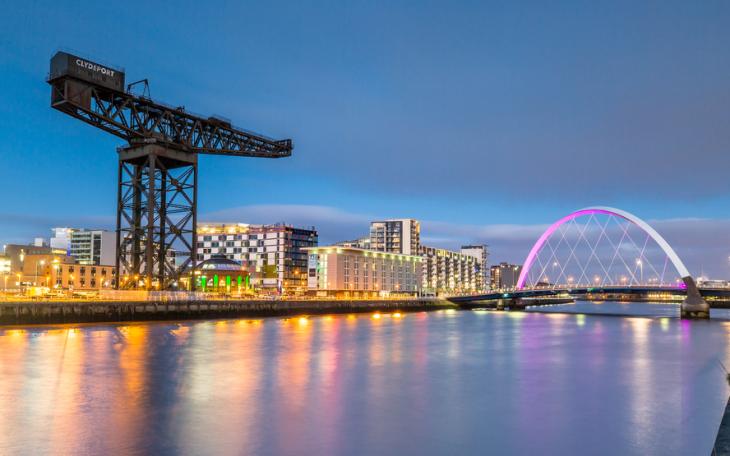Glasgow: from blue zone to demolition zone

You may have thought that the most pressing issue ahead of COP26 was to figure out how to halt global warming in time to stop the planet overheating. For those in the Glasgow City Chambers, however, the immediate issue remained much closer to home. That is, how to fit 25,000 delegates into the city’s 15,000 hotel rooms.
Coverage of delegates having to sofa surf and the ‘Glasgow gold rush’ have quickly made the headlines, with some landlords reportedly raking in £100,000 for the two-week summit. One man even listed his flat (with a driver) in Greenock, some 26 miles outside the city, for a reasonable £7,000.
For those living in the city, however, the news will have come as no surprise. Property prices and the rental market have soared since the pandemic hit, leaving the City Council to declare a rent crisis at the end of last year. Over the past decade, average rental prices have risen by almost 41%, and in the last year alone, the average monthly rent rocketed by £73, the biggest rise among UK cities. Properties now get snapped up in a record 17 days from hitting the market.
This acceleration in demand reflects the City’s own rapid transformation. Areas previously listed as ‘no-go’ zones such as the Southside and the Barras are now filled to the brim with wine bars, artisan coffee studios and exposed brick boutiques. This summer, upon returning to the City after 6 months, I was taken aback by the scale of this change. Tired retail spaces had transformed into bubble tea, brunch and Korean barbecue joints almost overnight on the street where I had lived for four years.
This more piecemeal regeneration is being ushered in by a string of massive regeneration programmes across Glasgow and the wider Clyde Valley where it sits. The latest iteration, Glasgow’s City Deal will see 20 major infrastructure projects completed across Glasgow and its suburbs, in a £1.13 billion funded agreement. Whole neighbourhoods such as Pollokshaws and Ibrox, where social and health issues remain high, have been diagnosed as Transformational Regeneration Areas, with the cure to demolish and begin again. Sighthill, who’s ten tower blocks were once synonymous with deprivation, will shortly boast 1,000 new homes, new civic squares and canal terraces. The poster child of the TRA’s, it has become one of the largest regeneration projects in the UK outside of London.
Over the past 30 decades, Glasgow has transformed itself from the post-industrial to a cultural and creative centre, attracting both COP26 and the Commonwealth Games in the last decade. Companies such as Barclays are already starting to take notice, with the announcement of a new Glasgow campus at Buchanan Wharf, expected to create 5,000 jobs by 2023 and JPMorgan Chase expanding their office space.
The city now has the opportunity to tackle long standing deprivation within the communities beyond the reach of Glasgow’s Blue Zone. COP26 has already shown how quickly the city can respond to meet the needs of the people in it. Sunday subway services using contactless cards, pedestrianised streets and well-lit walkways through parks have come to fruition ahead of the summit after years of residents calling for the same. It can only be hoped that the city raises to the occasion once the last delegate has been decamped from their sofa bed.









